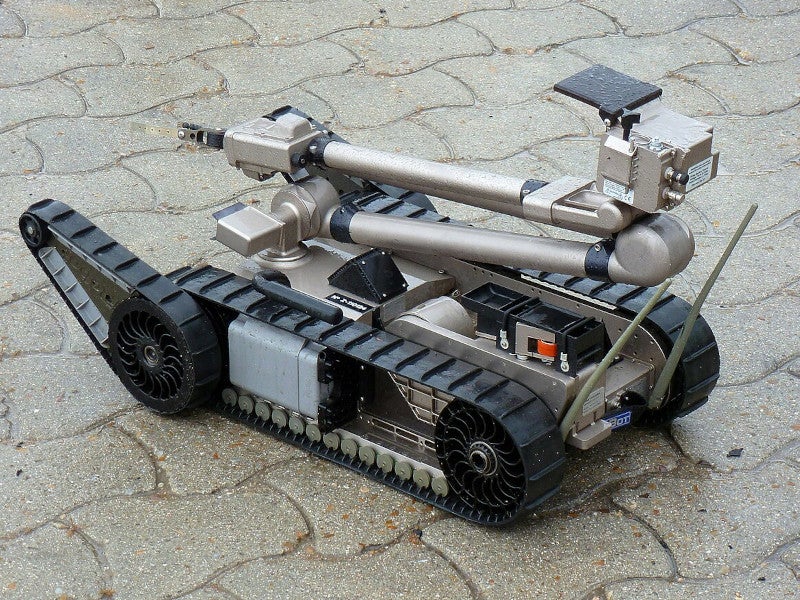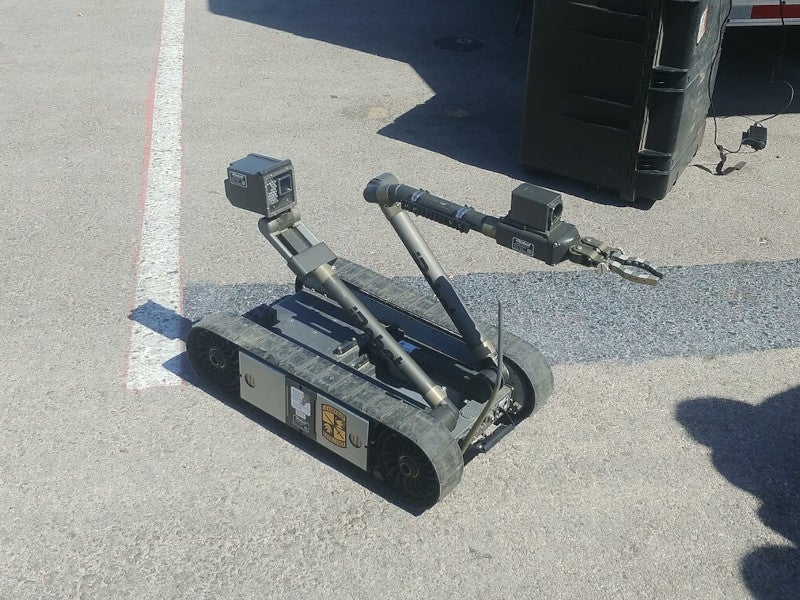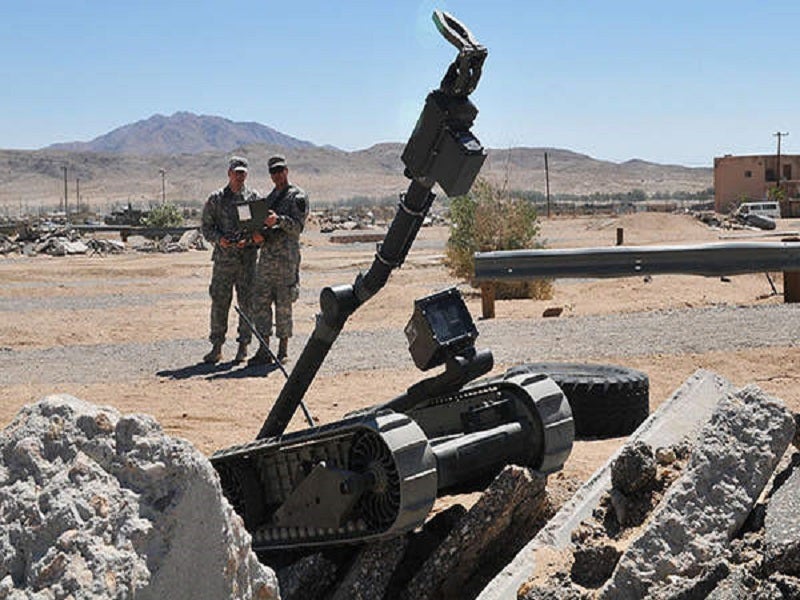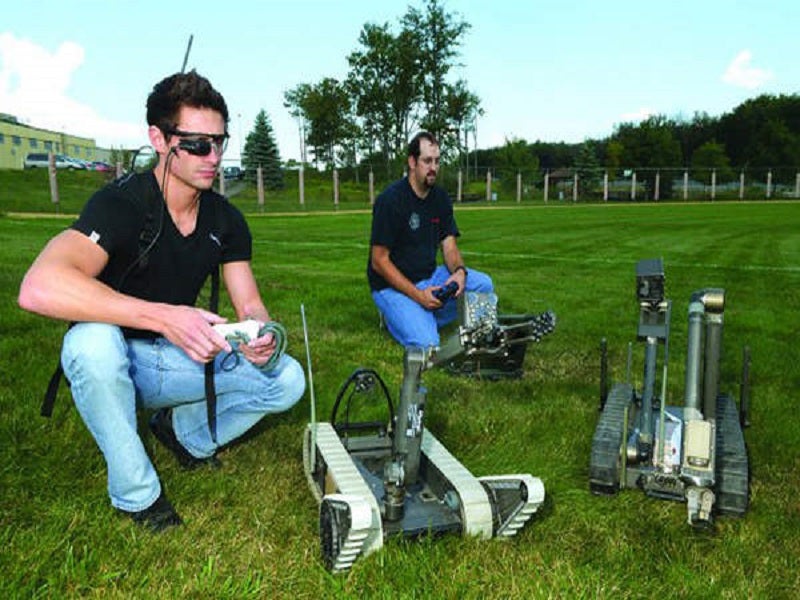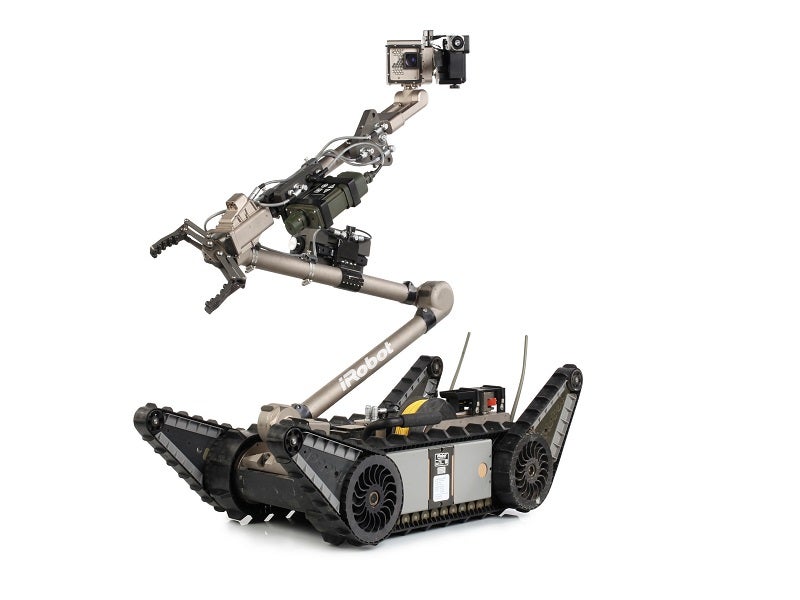The PackBot 510 is a multimission, man-transportable mobile robot designed for troops and first responders to execute dangerous missions in high-threat battlefield scenarios.
The PackBot 510 robot was developed by iRobot, a robotic technology-based solutions provider. In April 2016, iRobot sold its defence and security business to Arlington Capital Partners (ACP) to focus on its home robots and connected home solutions.
ACP established a standalone company named Endeavor Robotics to focus on the defence, public safety and industrial markets, following the acquisition.
Endeavor Robotics was acquired by FLIR Systems from ACP in March 2019.
In May 2021, Teledyne Technologies, an electronic components and communication products provider, acquired FLIR Systems and integrated it into its digital imaging segment.
It now operates under the name Teledyne FLIR.
The PackBot 510 can perform surveillance and reconnaissance, chemical, biological, radiological and nuclear (CBRN) detection, building and route clearance, explosive ordnance disposal (EOD), hazardous materials (HazMat) handling, improvised explosives device detection, checkpoint, and vehicle, and personnel inspections.
It can be easily configured based on the operators’ mission needs.
More than 5,000 PackBots have been delivered to military and civil defence forces around the world, with nearly 2,000 PackBots 510 deployed in Iraq and Afghanistan.
PackBot 510 robot design and features
Featuring a modular design, the PackBot 510 robot has a length of 68.6cm with the flippers stowed and about 88.9cm with the flippers extended.
The height without the payload or manipulator is 17.8cm, and the width with the flippers is 52.1cm. The multimission robot has a speed of 5.8mph. It can operate in water depths of up to 3ft.
The robot weighs 52.7lb without batteries. Furthermore, the robot’s manipulator can lift up to 44lb and supports a variety of accessories, sensors, and disruptor solutions.
It is equipped with mechanical cable cutters, a PAN disruptor mount, and a head-mounted hook. A route clearance kit is attached to remove and probe buried obstacles.
The robot’s digital architecture includes a FLIR Fido explosives detection sensor for ultrasensitive vapour detection and a HazMat kit for detecting chemical and biological materials.
Mobility features
The robot can climb stairs and navigate narrow surfaces, and it can traverse rubble, rock, mud, snow, and other difficult terrains.
It features mobility and agility with a zero-radius turn capability, the ability to handle slopes up to 43 degrees for both ascent and descent, lateral inclines up to 40 degrees, and stair climbing capabilities with a rise of 8.5in and a run of 10in.
Communication system
The robot incorporates a variety of communications systems such as a digital mesh radio kit with a frequency of 2.4GHz/4.9GHz, a two-way audio module, a headphone with a microphone, and a global positioning system.
PackBot 510 payload details
The PackBot 510 accommodates eight payload bays. The front bay is mounted with an enhanced awareness payload (EAP) equipped with a wide-angle drive camera.
The robot features integrated CBRN sensor payloads, allowing operators to monitor the environment remotely.
It supports multiple payload ports and is compatible with up to 22 disruptors.
In addition, it is equipped with four cameras and a forward-looking infrared/long-wave infrared thermal camera that transmits thermal images directly to the controller. It also has a Manipulator 1.0 attached to inspect hazardous materials.
A 312x zoom adjustable turret camera with white and infrared lights is mounted at the end of Manipulator 1.0 to provide a wide range of views for the safe inspection of objects.
The machine is also fitted with a small arm manipulator featuring a fixed-focus colour camera to perform manipulation, interrogation and inspection.
The User-Assist Package of the robot facilitates semi-autonomous functionality and enhanced situational awareness.
Operation and control of PackBot 510 robot
The PackBot 510 can be deployed by a single person in under two minutes and fits neatly into a vehicle, including a car’s trunk.
The robot is remotely operated by two game-style hand controllers and employs Aware 2 fifth-generation robot intelligence software.
A lightweight 15in Amrel laptop operator control unit is used to store high-resolution real-time imagery and video for post-mission analysis.
The unit can also store manipulator arm poses and display the robot’s location, orientation, and battery life. It also shows keyboard shortcuts for operating and controlling the robot without using a hand controller.
PackBot is managed through the uPoint multi-robot control system, which uses a touchscreen tablet controller.
It utilises the MPU5 radio, which operates on the Wave Relay MANET, to create a robust network that enables seamless operation among robots, operators, and observers.
PackBot 510 robot power unit details
PackBot 510 robot is powered by two BB-2590/U Li-ion rechargeable batteries, which provide continuous power for more than four hours.
With four BB-2590 batteries, the robot can operate for up to eight hours.
The robot also comes with two BB-2590 battery cradles and a battery charger.
Orders and deliveries of 510 PackBot
The PackBot was launched on the market in 2002 and has undergone several adaptations. In February 2007, iRobot released the robot with an EOD bomb disposal kit, and by February 2010, the 3,000th robot had been delivered.
In October 2010, the US Army TACOM Contracting Center in Warren, Michigan, placed a $14m order for iRobot Aware 2 robot intelligence software and PackBot spares to upgrade their 510 FasTac fleet of robots to the PackBot 510 standards.
iRobot secured $4.4m worth of international orders for the delivery of 27 robots in the first quarter of 2011.
The US Army’s robotic systems joint program office (RSJPO) awarded a five-year, $60m indefinite delivery/indefinite quantity (IDIQ) contract for the delivery of PackBot robots and spares in September 2011.
In May 2012, the RSJPO placed two orders totalling $6m with iRobot for the delivery of PackBot robot spare parts.
It also awarded a $30m four-year IDIQ contract with an initial $3m order for PackBot robots equipped with FasTac kits and associated spares in July 2013.
Brazil placed $7.2m worth of orders with iRobot for the delivery of PackBots and spare parts in May 2013.
In September 2014, iRobot secured multiyear contracts from the Canadian Department of National Defence with an initial value of $9.6m for the supply of 20 iRobot PackBot 510 CBRN Recce Systems.
The Naval Surface Warfare Center, Indian Head Explosive Ordinance Disposal Technology Division awarded a $7.6m contract to iRobot to perform upgrades and provide spares for 46 Man Transportable Robotic System (MTRS) robots in October 2014.
The MTRS is based on the PackBot 510 multi-mission robot.
In the same month, iRobot also received a $13m three-year IDIQ contract to deliver upgrades and spares for MTRS robots in October 2014.

